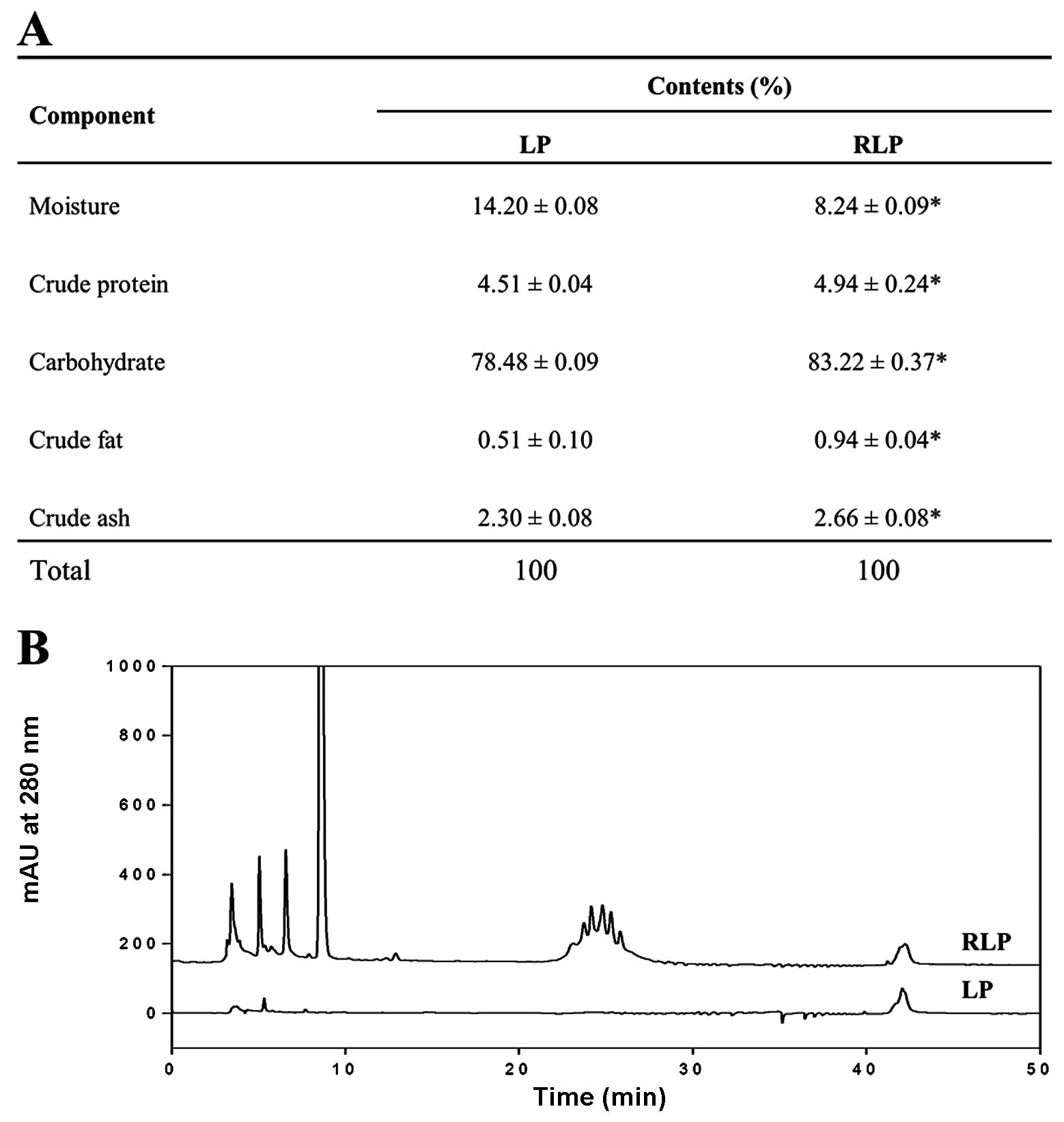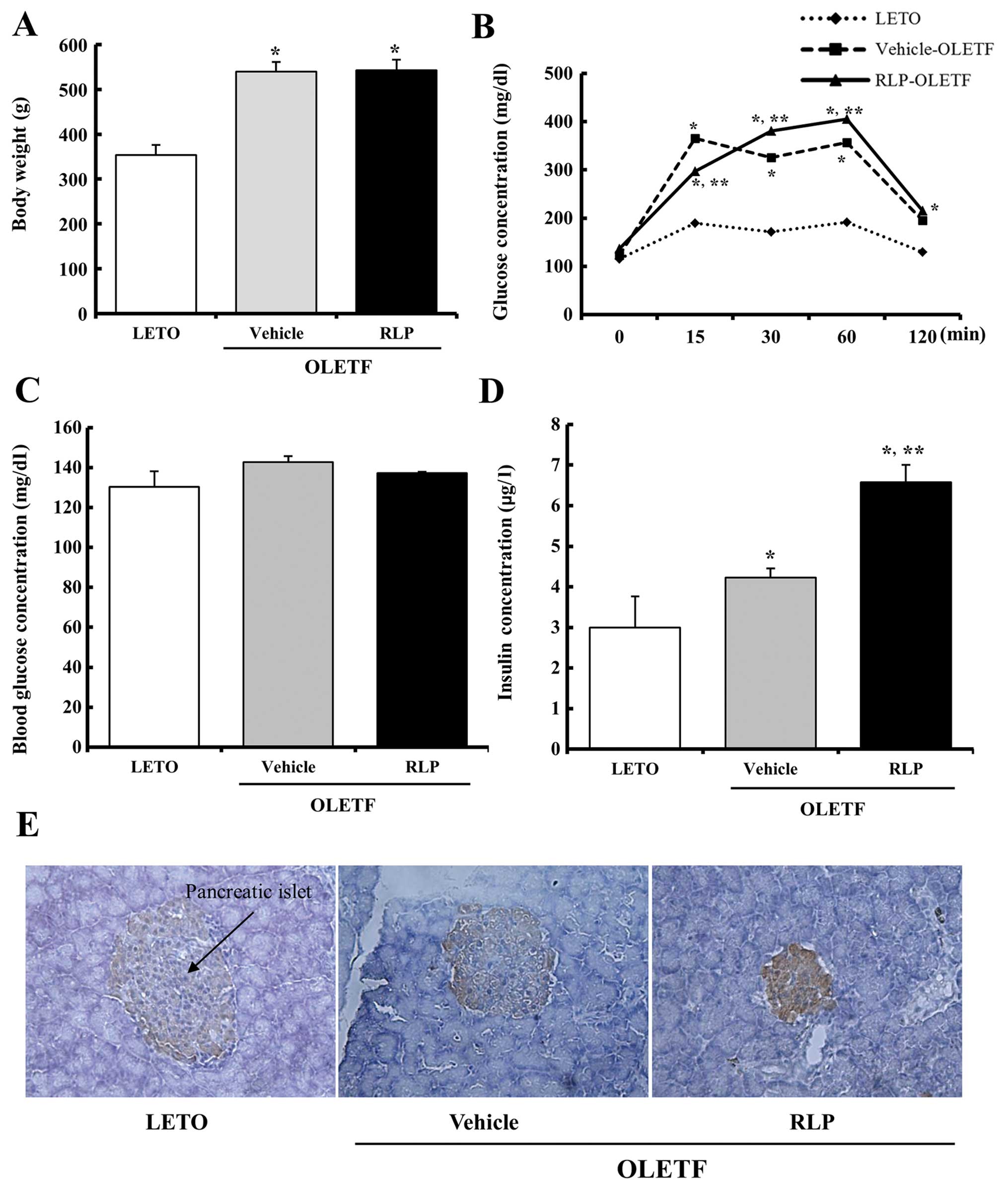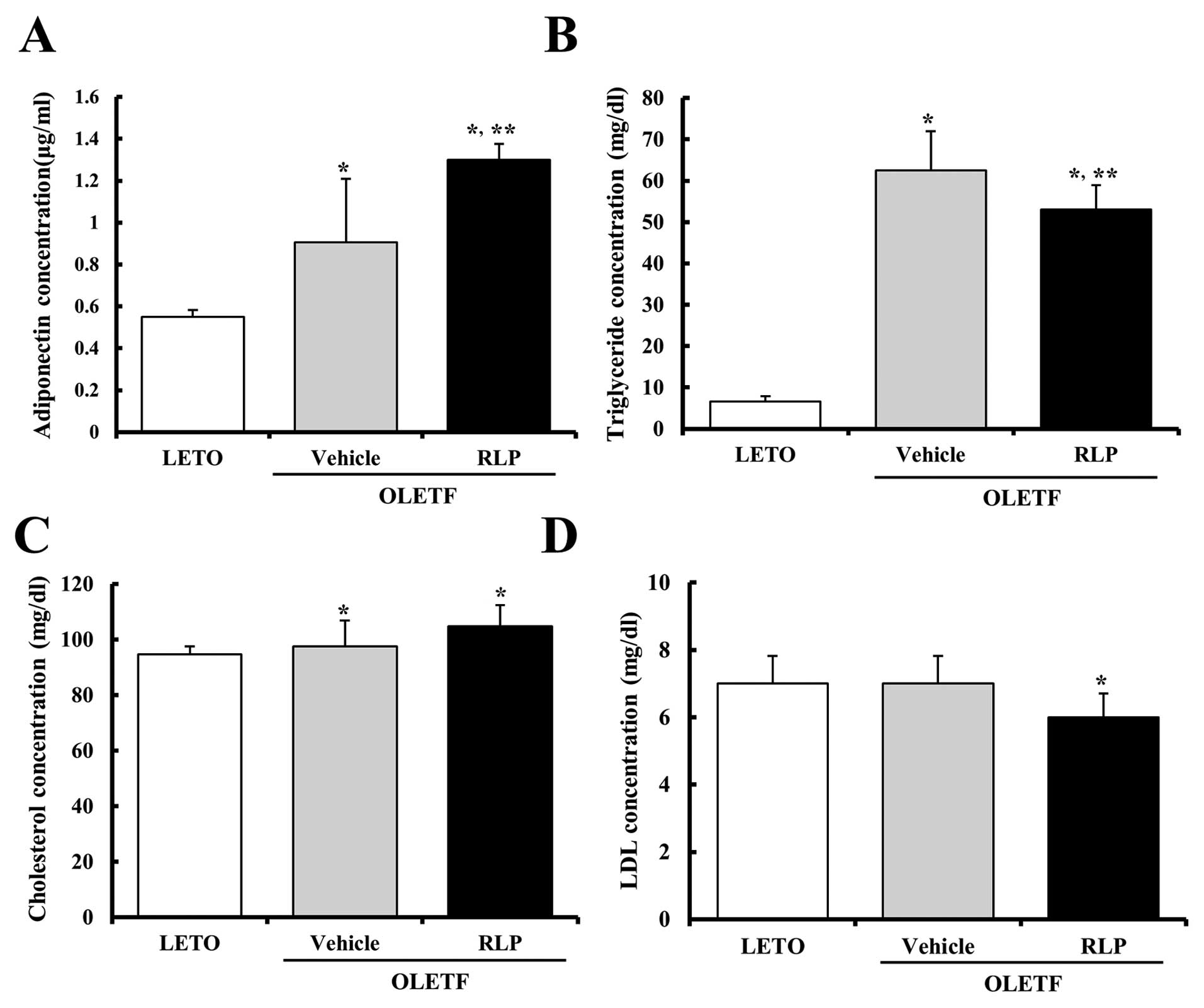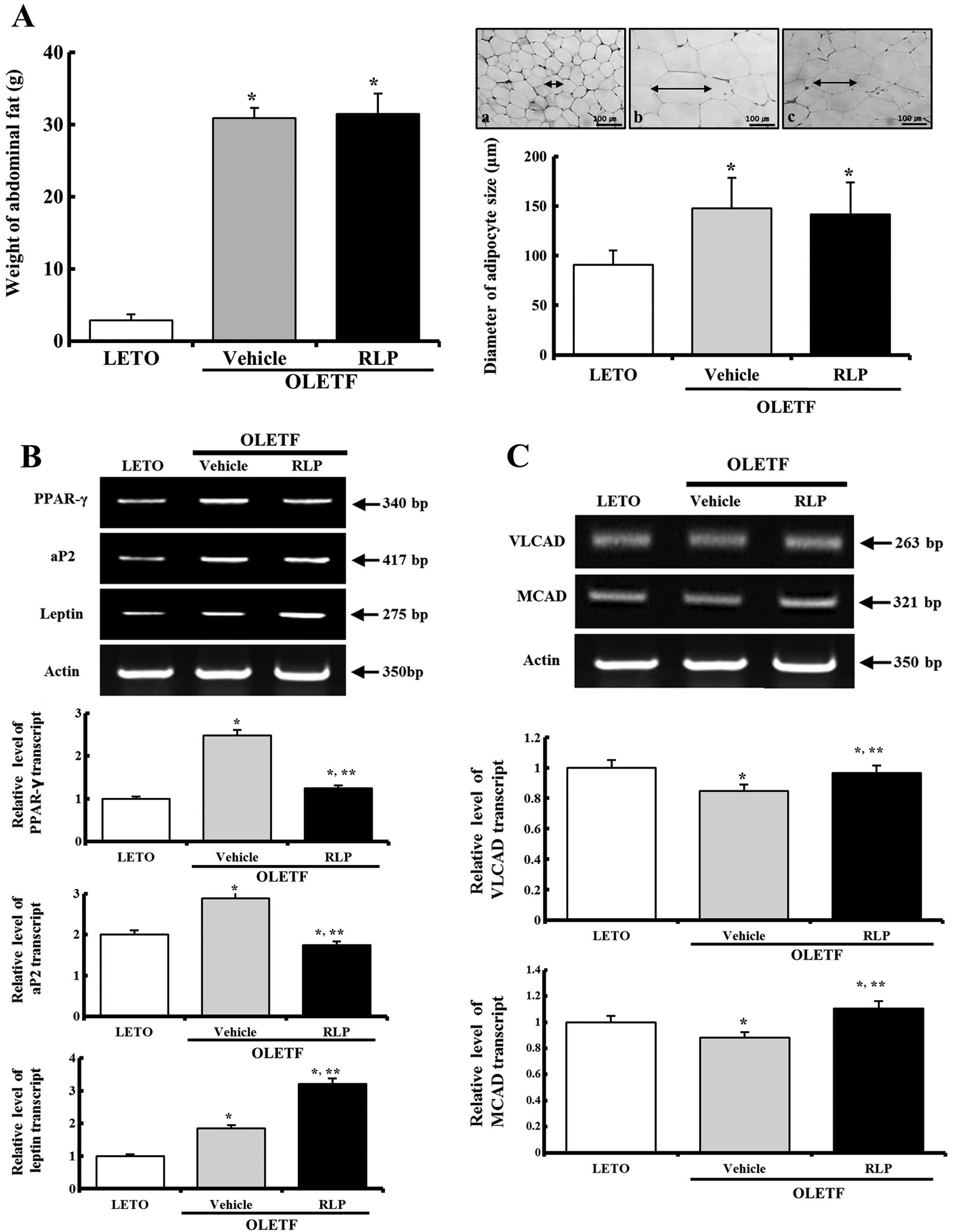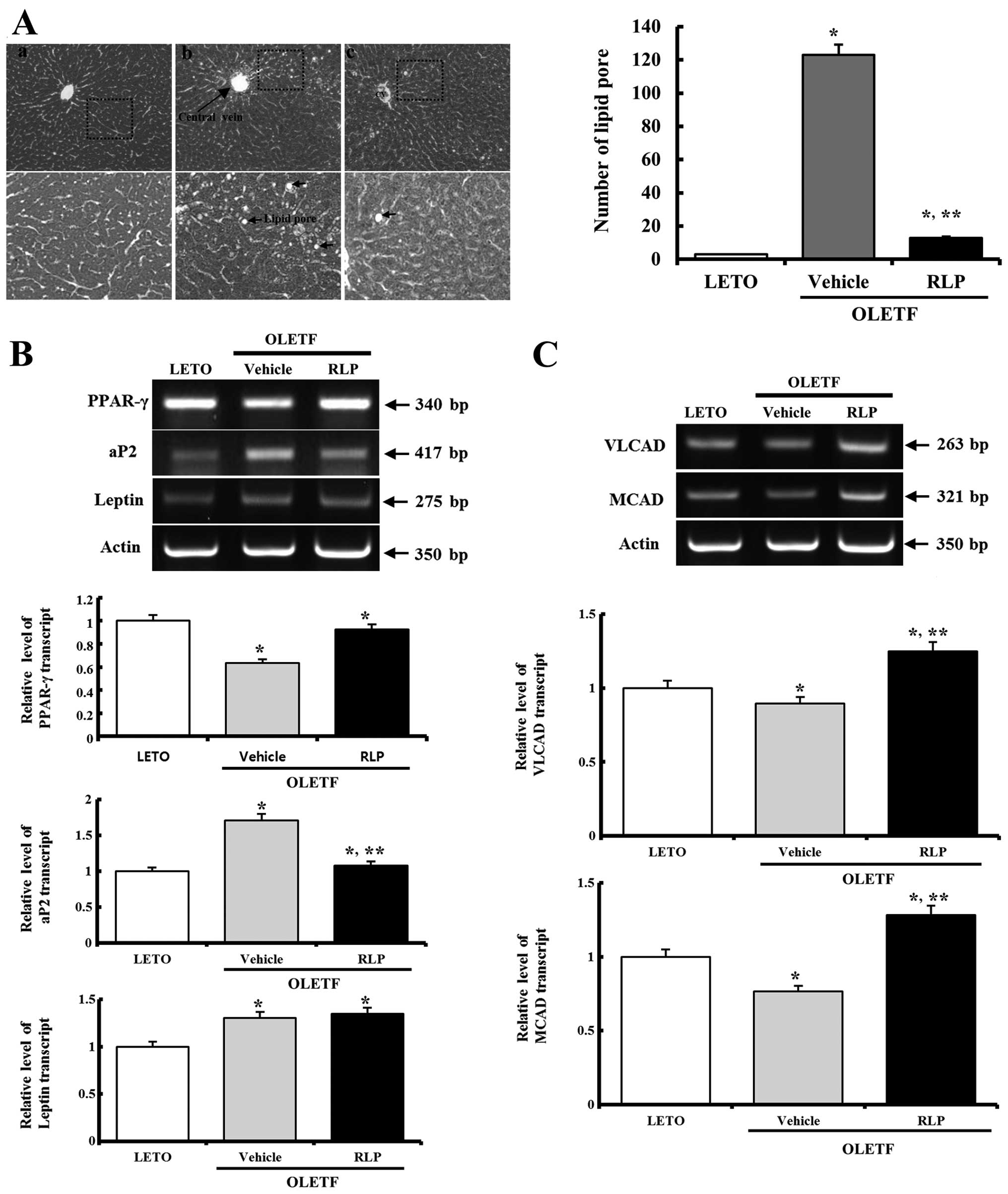Spandidos Publications style
Lee HR, Kim JE, Goo JS, Choi SI, Hwang IS, Lee YJ, Son HJ, Lee HS, Lee JS, Hwang
DY, Hwang
DY, et al: Red Liriope platyphylla contains a large amount of polyphenolic compounds which stimulate insulin secretion and suppress fatty liver formation through the regulation of fatty acid oxidation in OLETF rats. Int J Mol Med 30: 905-913, 2012.
APA
Lee, H.R., Kim, J.E., Goo, J.S., Choi, S.I., Hwang, I.S., Lee, Y.J. ... Hwang
, D.Y. (2012). Red Liriope platyphylla contains a large amount of polyphenolic compounds which stimulate insulin secretion and suppress fatty liver formation through the regulation of fatty acid oxidation in OLETF rats. International Journal of Molecular Medicine, 30, 905-913. https://doi.org/10.3892/ijmm.2012.1081
MLA
Lee, H. R., Kim, J. E., Goo, J. S., Choi, S. I., Hwang, I. S., Lee, Y. J., Son, H. J., Lee, H. S., Lee, J. S., Hwang
, D. Y."Red Liriope platyphylla contains a large amount of polyphenolic compounds which stimulate insulin secretion and suppress fatty liver formation through the regulation of fatty acid oxidation in OLETF rats". International Journal of Molecular Medicine 30.4 (2012): 905-913.
Chicago
Lee, H. R., Kim, J. E., Goo, J. S., Choi, S. I., Hwang, I. S., Lee, Y. J., Son, H. J., Lee, H. S., Lee, J. S., Hwang
, D. Y."Red Liriope platyphylla contains a large amount of polyphenolic compounds which stimulate insulin secretion and suppress fatty liver formation through the regulation of fatty acid oxidation in OLETF rats". International Journal of Molecular Medicine 30, no. 4 (2012): 905-913. https://doi.org/10.3892/ijmm.2012.1081















